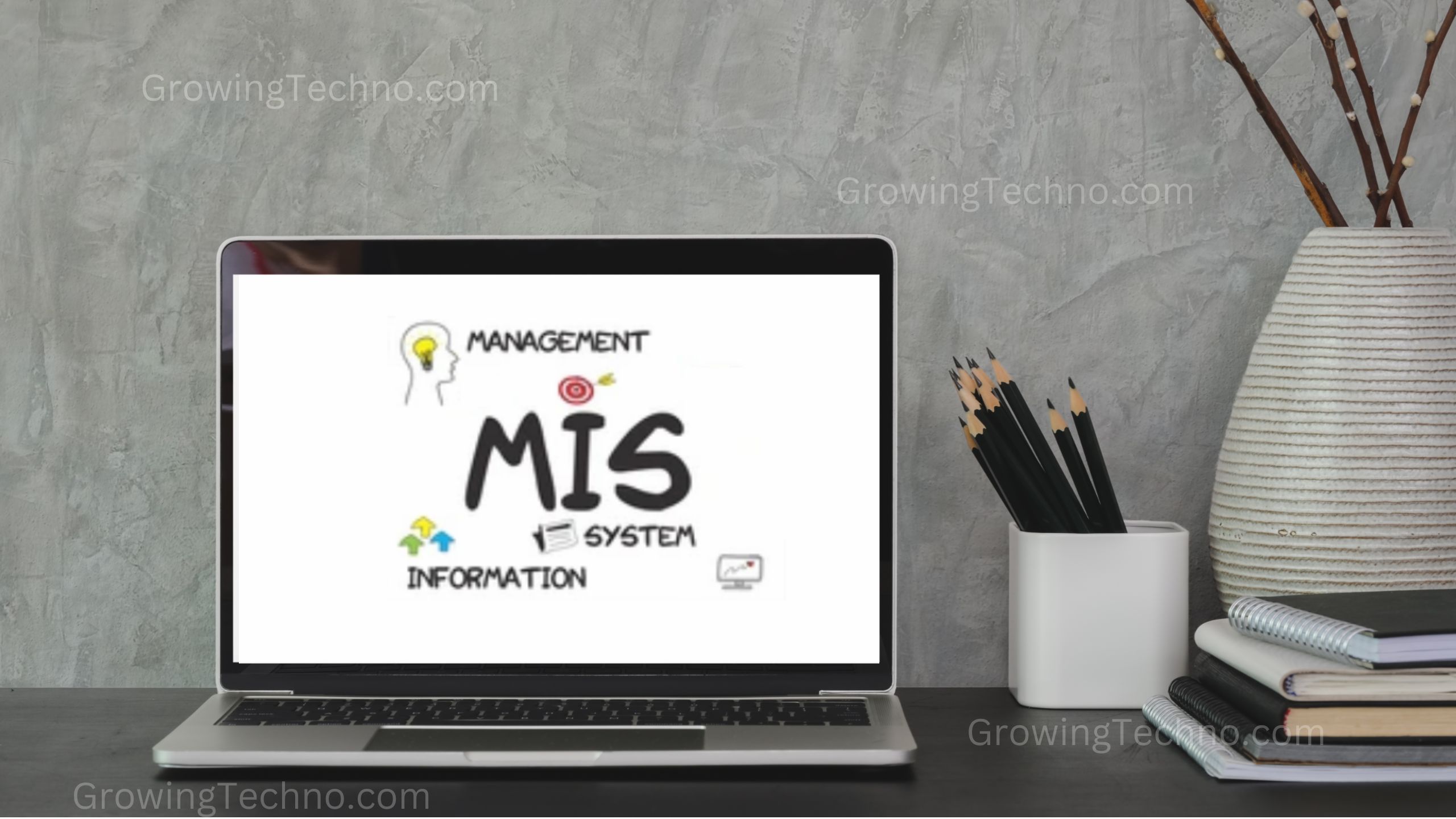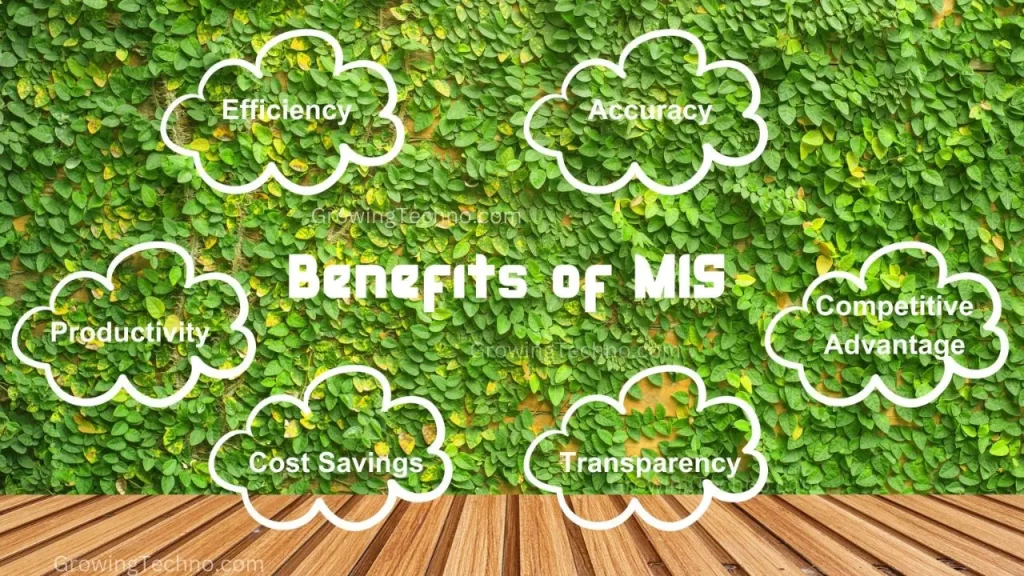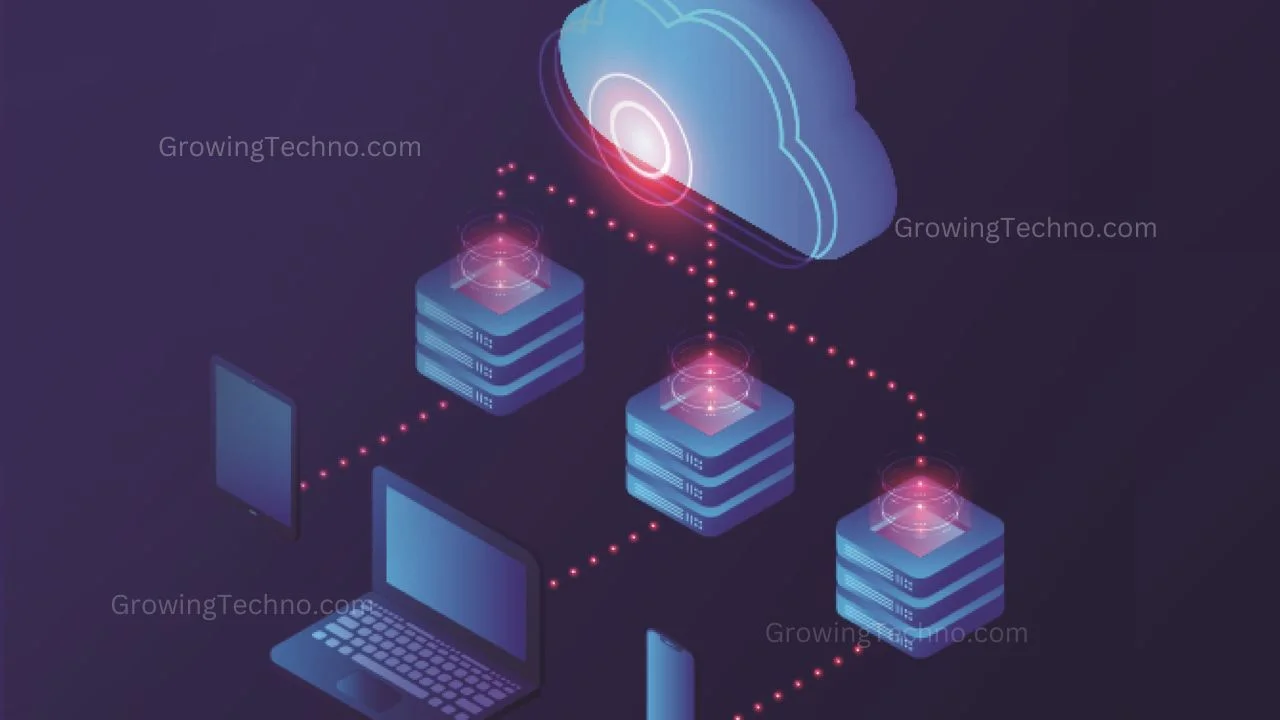
In today’s fast-paced business world, data and information are the lifeblood of successful decision-making. For any organization to thrive, it needs a robust system in place to collect, store, process, and distribute information efficiently. This is where Management Information Systems, commonly known as MIS, come into play.
MIS is not just a fancy jargon for tech-savvy professionals. It’s a crucial aspect of managing an organization’s information efficiently and making informed choices. This article aims to demystify MIS in simple terms, avoiding jargon and complex language. We’ll discuss what MIS is, its components, its importance, and how it benefits organizations.
What is MIS?
Management Information Systems (MIS) are like the brain of an organization. They’re responsible for processing and organizing information, making it available to those who need it, and aiding decision-makers in their tasks.
Imagine you’re running a small bakery. You need to know how many pastries to bake tomorrow. To make this decision, you require information about past sales, customer preferences, and current ingredients stock. MIS helps you gather and process this information efficiently.
At its core, MIS is all about collecting data, transforming it into information, and presenting it to the right people at the right time.
Components of MIS
- Data Gathering: The first step in MIS is collecting raw data. This data can come from various sources, such as sales records, customer feedback, or website traffic. In the bakery example, this could include daily sales figures, customer reviews, and ingredient inventory.
- Data Storage: Once the data is collected, it needs a safe place to be stored. These can be physical servers or cloud-based systems. In the bakery case, you’d have records of all pastries sold, customer comments, and ingredient inventory levels securely stored.
- Data Processing: Raw data isn’t very useful on its own. It needs to be processed and turned into meaningful information. In our bakery, this means calculating average daily sales, identifying popular pastries, and determining which ingredients are running low.
- Information Dissemination: Once information is processed, it’s shared with those who need it. The bakery owner, for instance, would get a report showing which pastries sell the most and which ingredients need restocking.
Importance of MIS
Now that we understand the basic components, let’s explore why MIS is essential for any business or organization.
1. Informed Decision-Making
One of the paramount roles of MIS is its ability to provide the essential information required for informed decision-making. It’s as though MIS equips decision-makers with a crystal ball, allowing them to make choices based on accurate, up-to-date data. Let’s revisit the bakery scenario for a moment. Imagine you are the bakery owner, and you need to determine how many pastries to prepare for the next day. MIS helps you make this decision with precision. By offering insights into past sales, customer preferences, and inventory levels, it enables you to avoid overproduction and, subsequently, wastage while ensuring customer satisfaction with freshly baked pastries.
2. Increased Efficiency
MIS is akin to a well-oiled machine that automates data collection and processing. By doing so, it saves precious time and mitigates the risk of human errors. In our bakery example, this translates into a streamlined operation. There are fewer instances of mistakes in ingredient orders, as the system ensures that they are placed at the right time in the right quantities. Moreover, the automation of data collection frees up your staff to focus on more value-added tasks rather than tedious data entry.
3. Better Planning
Planning is the cornerstone of any successful venture. MIS empowers organizations to prepare effectively for the future. In the case of the bakery owner, historical data and trends become invaluable assets. By analyzing past sales patterns and customer preferences, you can anticipate fluctuations in demand and stock up on the necessary ingredients. This proactive approach ensures you’re always well-prepared and can meet customer needs consistently.
4. Improved Communication
Effective communication is key to any organization’s success. MIS acts as a bridge, facilitating seamless communication between various departments within an organization. The bakery is no exception. Through MIS, the kitchen staff can stay in the loop regarding expected customer footfall. This means they know precisely how many pastries to prepare, avoiding both overproduction and underproduction. Such coordination and information sharing lead to a more efficient operation and higher customer satisfaction levels.
5. Competitive Advantage
In a bustling business landscape, having a competitive edge is often the difference between success and obscurity. MIS bestows organizations with a valuable competitive advantage. Think about the bakery once more. With MIS, you have access to timely and accurate information about what pastries are most popular and what ingredients are selling fast. This information enables you to ensure that you always have the right products in stock, giving you an edge over competitors who might struggle with stock management.
6. Cost Reduction
Cost optimization is a universal goal for any business. MIS plays a significant role in achieving this goal. By optimizing processes, minimizing waste, and ensuring efficient resource allocation, MIS often leads to cost savings. Returning to our bakery example, it means lower ingredient costs and less labor wasted on unnecessary pastry production. This cost reduction can translate into increased profitability and resources that can be invested elsewhere in the business.
MIS in the Real World
let’s take a deep dive into a real-world scenario that exemplifies how MIS functions in a complex, multinational corporation. In this illustration, we’ll consider the fictional company, XYZ Electronics, to see how MIS plays a pivotal role in its daily operations and decision-making processes.
Data Gathering
At XYZ Electronics, the process begins with data gathering. This is where raw information is sourced from various units within the organization. These units can encompass a broad spectrum of operations, such as sales, customer feedback, inventory levels, and employee performance reports. Imagine the sales department is collecting data on the number of products sold, the marketing department is capturing customer feedback and preferences, the inventory team is tracking stock levels in different warehouses, and HR is generating reports on employee performance.
Data Storage
Once this data is collected, it needs a safe and organized repository. XYZ Electronics maintains a centralized database system that is both secure and accessible to authorized personnel. The data storage infrastructure may reside on company servers within the organization’s premises, or it might be hosted on a cloud-based platform. This database is a treasure trove of valuable information, housing a vast array of datasets that are crucial to the organization’s operations and decision-making processes.
Data Processing
Raw data, while essential, is not immediately actionable. It needs to be processed and transformed into meaningful information. At XYZ Electronics, this is where the magic happens. The collected data undergoes a series of computational procedures and algorithms to derive insights and generate informative reports and dashboards. These reports offer a comprehensive view of the organization’s performance, including sales trends, product performance metrics, and areas that require attention. In essence, data processing is the critical step that converts raw data into intelligence that can steer the company in the right direction.
Information Dissemination
The insights generated through data processing are of little use if they remain confined within the confines of the MIS system. Hence, the next stage is information dissemination. Reports and dashboards are distributed across various departments within XYZ Electronics. This includes departments such as sales, marketing, and product development, which rely on these insights to make strategic decisions. Furthermore, the CEO of the company receives a high-level summary of the organization’s performance, providing a bird’s-eye view of how the company is faring in the market.
Decision-Making
Armed with the wealth of information provided by MIS, the top executives at XYZ Electronics are equipped to make well-informed decisions. For instance, the CEO and department heads can decide to increase the production of a particularly popular product line, based on robust sales trends and customer feedback. Alternatively, the marketing team can tweak its strategies to address shifting market dynamics, and the supply chain department can take action to resolve any issues detected in the inventory management system. In essence, the decision-making process is driven by data-backed insights, which not only increases the likelihood of making the right choices but also reduces the element of uncertainty in corporate decision-making.
In this manner, XYZ Electronics exemplifies the real-world application of MIS, where it serves as a catalyst for data-driven decision-making, aids in optimizing operations, and enhances overall business efficiency. While our bakery example provided a simplified understanding of MIS, the scenario at XYZ Electronics underscores the complex, multifaceted nature of MIS in large-scale organizations, where data is a valuable resource and the informed application of that data is a crucial driver of success.
Benefits of MIS

- Efficiency: MIS streamlines data collection and processing, saving time and reducing errors. Automated processes free employees from repetitive tasks, allowing them to focus on more value-added activities.
- Accuracy: MIS ensures data is accurate and up-to-date, leading to better decision-making. Reliable data forms the foundation for strategic choices.
- Productivity: Automation empowers the workforce to be more productive. Employees can engage in critical thinking and innovation when they are freed from manual data entry.
- Competitive Advantage: MIS identifies market trends and opportunities, helping organizations stay ahead of the competition. It enables timely market entry, product improvements, and effective marketing strategies.
- Cost Savings: By optimizing resource allocation and inventory management, MIS can reduce costs. Organizations benefit from efficient resource usage and data-driven decision-making.
- Transparency: MIS fosters transparency within the organization. It offers visibility into operations and performance at all levels, promoting trust, accountability, and efficient monitoring of employee and departmental performance.
Challenges of MIS
While MIS offers numerous benefits, it’s not without its challenges.
1. Data Security
Securing data is a paramount concern. Data breaches can result in significant financial losses and damage to an organization’s reputation. This challenge requires investing in robust security measures, including encryption and access controls.
2. Implementation Costs
Setting up an MIS can be expensive, which can be a barrier for smaller businesses. The initial costs encompass hardware, software, personnel, and training. While the long-term benefits are substantial, the upfront investment can be a hurdle for organizations with limited resources.
3. Employee Training
Efficient use of MIS tools requires proper training of employees, which can be a time-consuming and resource-intensive process. Training employees to operate the MIS and interpret the data it provides is an ongoing endeavor that demands commitment.
4. Compatibility Issues
Integrating MIS with existing systems and software can be challenging, leading to inefficiencies and data inconsistencies. This can result in unforeseen costs and complications, often requiring expert IT consultants.
5. Data Quality
The accuracy of data processed by MIS is critical. Poor-quality data can lead to poor decision-making. Organizations need data quality management practices to ensure data accuracy through validation, cleaning, and normalization processes.
MIS in Various Sectors
MIS is not limited to the corporate world. It plays a vital role in many sectors:
Healthcare
In healthcare, MIS is indispensable for managing patient records, appointments, and billing. It ensures that the right care is provided to patients, streamlining administrative tasks, and enhancing the overall patient experience.

Education
Schools and universities rely on MIS to efficiently manage student data, track course enrollment, and handle financial aspects. This facilitates the smooth operation of educational institutions and improves resource allocation.
Government
Government agencies harness MIS to manage diverse citizen data and public services. It aids in tax collection, simplifies welfare distribution, and enhances public record management. Through MIS, governments can provide services more efficiently and transparently.
Retail
The retail industry benefits from MIS by optimizing operations and elevating customer experiences. It facilitates inventory management, empowers businesses to analyze sales trends, and enhances customer relationship management. For retailers, this translates to better-stocked shelves and improved customer satisfaction.
Manufacturing
In the manufacturing sector, MIS is a linchpin for enhancing production efficiency and product quality. Manufacturers employ MIS for production planning, quality control, and supply chain management. This ensures the smooth flow of production, minimizes defects and maintains product quality standards.
MIS Trends
MIS is continuously evolving. Here are some current trends in the field:
1. Big Data Analytics
The era of big data has brought with it the need for sophisticated data analytics. MIS professionals are focusing on their ability to process and extract valuable insights from enormous datasets. This trend empowers organizations to uncover hidden patterns, understand customer behavior, and improve their decision-making processes. From targeted marketing to operational efficiency, the capacity to leverage big data is now integral to modern MIS.
2. Artificial Intelligence
Artificial Intelligence (AI) is quickly becoming a cornerstone of MIS. Organizations are integrating AI to streamline decision-making processes, enhance data analysis, and elevate operational efficiency. AI algorithms can swiftly analyze large datasets with remarkable accuracy and speed, leading to more informed decision-making. Applications of AI in MIS range from predictive analytics for resource planning to chatbots providing customer support.
3. Cloud-Based Systems
Many organizations are shifting their MIS systems to the cloud, a trend driven by its unique blend of flexibility and cost savings. Cloud-based MIS enables easy data access from anywhere, streamlines data sharing, and reduces the need for on-premises hardware. The cloud is not just a data repository; it’s a dynamic environment that allows MIS to adapt to evolving needs seamlessly.
4. Mobile MIS
In a world where mobile devices are ubiquitous, MIS is adapting to be more accessible on smartphones and tablets. Mobile MIS empowers professionals to access vital information on the go, enabling real-time decision-making from virtually anywhere. This enhances productivity and facilitates remote work, reshaping the way organizations operate and make decisions.
5. Cybersecurity
As the digital landscape expands, the need for robust cybersecurity measures within MIS becomes increasingly critical. Data security is a central concern, prompting MIS professionals to fortify their cybersecurity measures. This includes implementing advanced encryption, multi-factor authentication, and intrusion detection systems. Effective cybersecurity ensures that sensitive data remains resilient against cyber threats, safeguarding an organization’s reputation and financial stability.
Conclusion
In simple terms, Management Information Systems (MIS) are the backbone of efficient information management within organizations. They facilitate data collection, storage, processing, and dissemination, ultimately leading to informed decision-making and improved efficiency. MIS benefits organizations in various ways, including cost reduction, better planning, and a competitive advantage.
However, MIS also presents challenges, such as data security and implementation costs. It’s a versatile tool that finds applications in diverse sectors like healthcare, education, government, retail, and manufacturing.
As technology continues to evolve, so does MIS, with trends like big data analytics, artificial intelligence, and cloud-based systems shaping its future. By staying up-to-date with these trends and addressing the challenges, organizations can harness the full potential of MIS and remain competitive in their respective industries.












